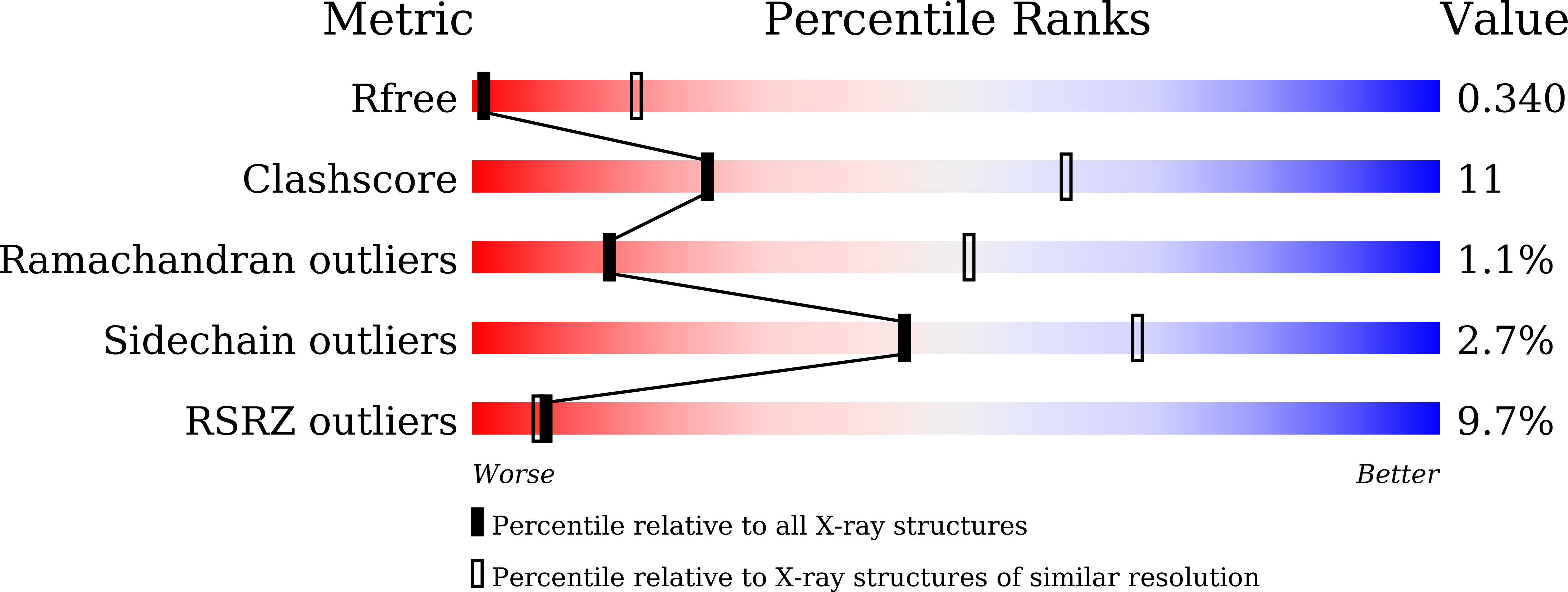Structural insight into the cooperation of chloroplast chaperonin subunits
Zhang, S., Zhou, H., Yu, F., Bai, C., Zhao, Q., He, J., Liu, C.(2016) BMC Biol 14: 29-29
- PubMed: 27072913
- DOI: https://doi.org/10.1186/s12915-016-0251-8
- Primary Citation of Related Structures:
5CDI - PubMed Abstract:
Chloroplast chaperonin, consisting of multiple subunits, mediates folding of the highly abundant protein Rubisco with the assistance of co-chaperonins. ATP hydrolysis drives the chaperonin allosteric cycle to assist substrate folding and promotes disassembly of chloroplast chaperonin. The ways in which the subunits cooperate during this cycle remain unclear. Here, we report the first crystal structure of Chlamydomonas chloroplast chaperonin homo-oligomer (CPN60β1) at 3.8 Å, which shares structural topology with typical type I chaperonins but with looser compaction, and possesses a larger central cavity, less contact sites and an enlarged ATP binding pocket compared to GroEL. The overall structure of Cpn60 resembles the GroEL allosteric intermediate state. Moreover, two amino acid (aa) residues (G153, G154) conserved among Cpn60s are involved in ATPase activity regulated by co-chaperonins. Domain swapping analysis revealed that the monomeric state of CPN60α is controlled by its equatorial domain. Furthermore, the C-terminal segment (aa 484-547) of CPN60β influenced oligomer disassembly and allosteric rearrangement driven by ATP hydrolysis. The entire equatorial domain and at least one part of the intermediate domain from CPN60α are indispensable for functional cooperation with CPN60β1, and this functional cooperation is strictly dependent on a conserved aa residue (E461) in the CPN60α subunit. The first crystal structure of Chlamydomonas chloroplast chaperonin homo-oligomer (CPN60β1) is reported. The equatorial domain maintained the monomeric state of CPN60α and the C-terminus of CPN60β affected oligomer disassembly driven by ATP. The cooperative roles of CPN60 subunits were also established.
Organizational Affiliation:
State Key Laboratory of Plant Cell and Chromosome Engineering, Institute of Genetics and Developmental Biology, Chinese Academy of Sciences, Beijing, 100101, China.














